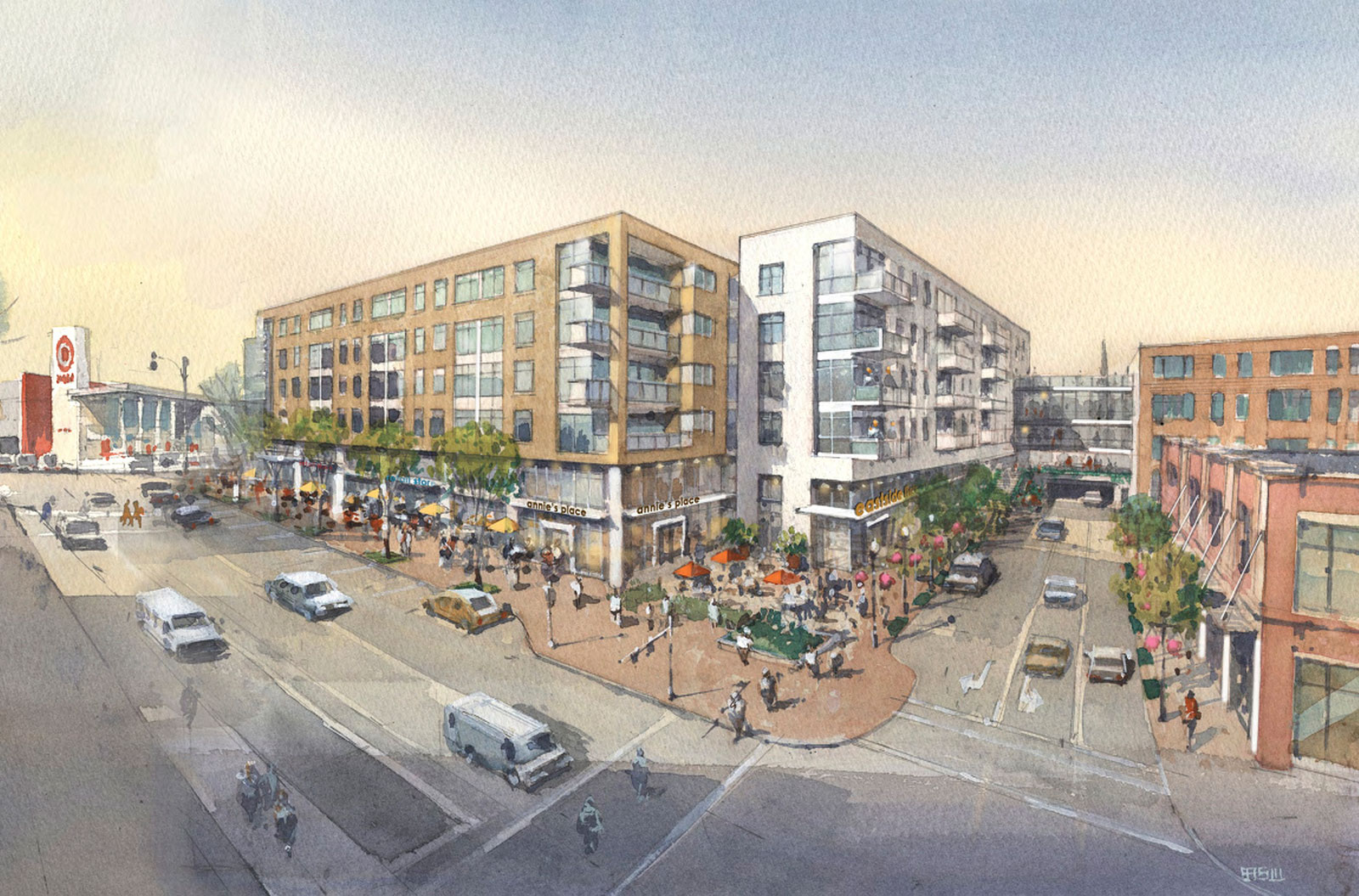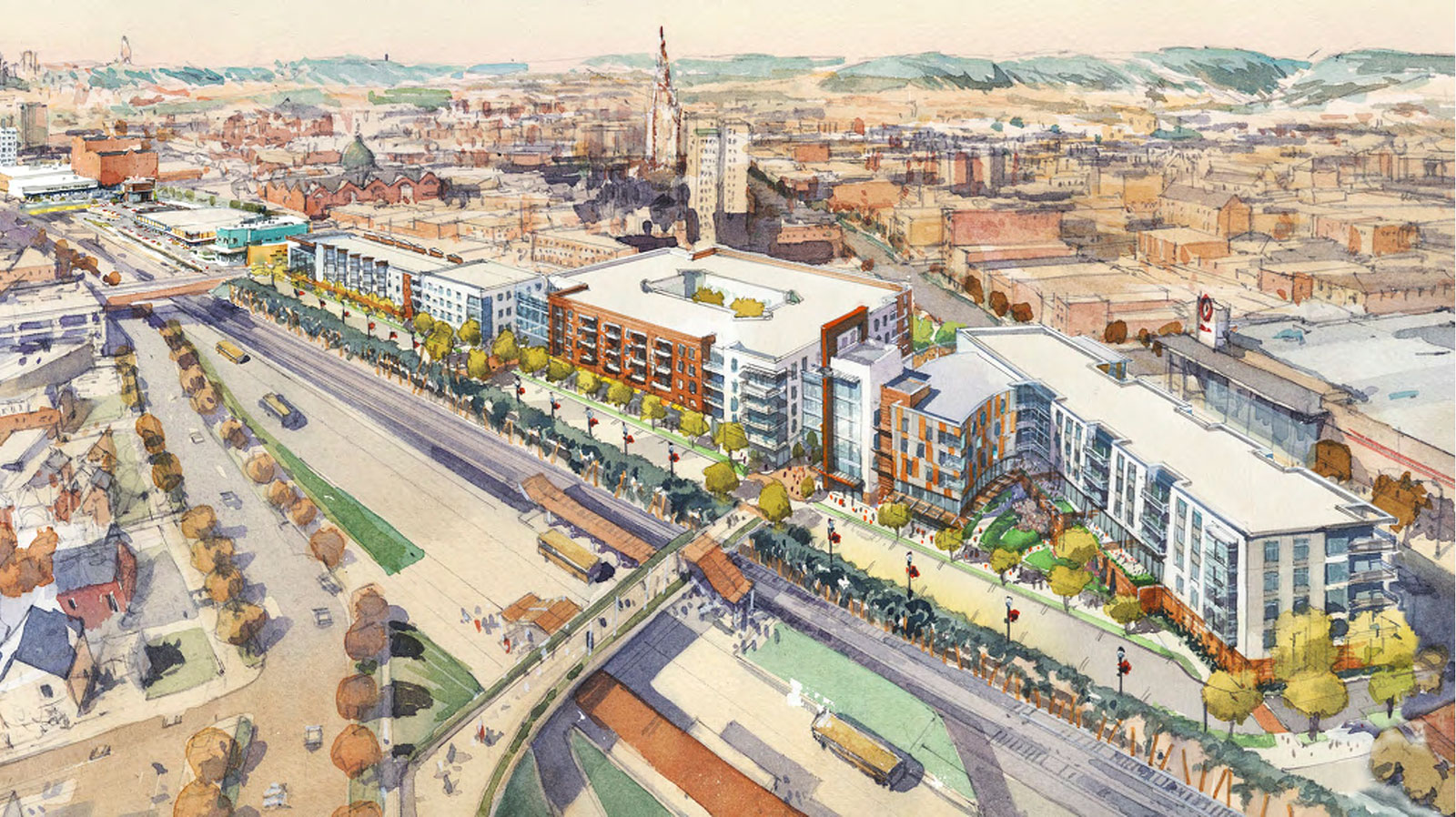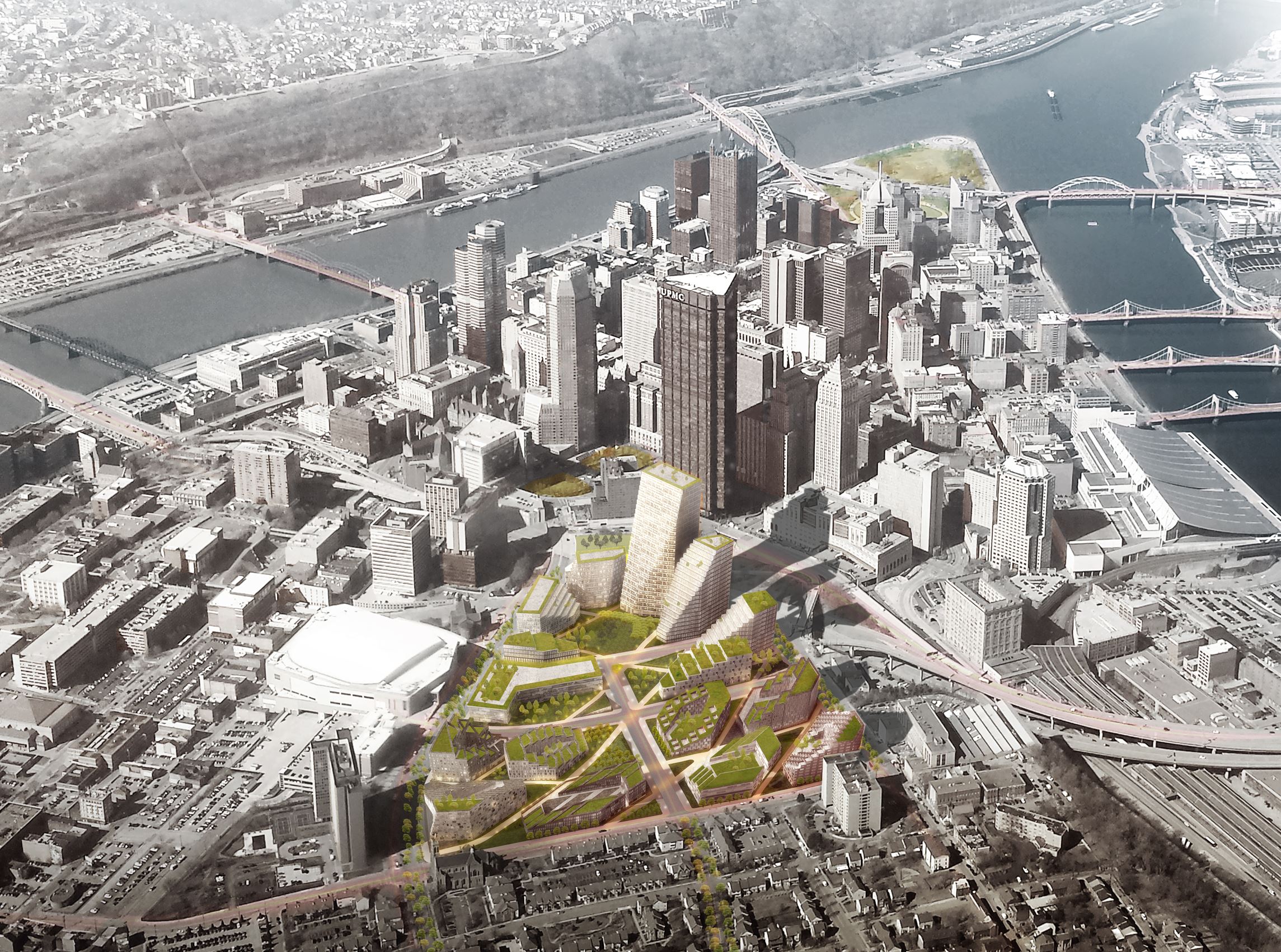
“I live here. I’m from here. My whole family is here. We try to stay close together. This is America. I’m a Marine, I went to war three times. I served my country. It feels crazy not to be able to live in my own area where I grew up,” writes an East Liberty resident in Black Homes Matter, a booklet describing alternative approaches to neighborhood revitalization in the city of Pittsburgh. Since the Reagan-era shutdown of funding for public housing projects, the lack of decent affordable housing for low-income people has become a crisis in many cities. San Francisco and Seattle are notorious for pushing out poor and working-class residents, but mid-sized cities like Pittsburgh will be following suit unless city governments have the courage to implement equitable development.
Pittsburgh has been designated the “most livable city” in the US several times in the past decade. It gets points for its parks and rivers, excellent universities and hospitals, low crime rate, strong family-centered neighborhoods, expanding high-tech economy, and fine dining. Of course, The Economist and Forbes magazine do not consider how the city’s livability is distributed unequally across lines of race and class. The facts that we have among the steepest bus fares in the nation, the lowest minimum wages, and high infant mortality among African Americans do not figure in rankings designed to attract tourists and new businesses to the city.
Housing is one of the sharpest of these class-race fault lines, as gentrification accelerates in desirable neighborhoods. In a city already segregated by race, affordable housing is rapidly being replaced by high-end units for young professionals attracted by the city’s hi-tech reinvention of itself after the decline of steel and other industries. The former Nabisco factory in East Liberty now houses a Google hub in the Bakery Square mall and “village,” with an LA Fitness, Anthropologie, and high-priced coffee shops. Its developer received major public funding because the project borders a “blighted” neighborhood, whose mostly black residents have hardly benefited from the action. Few local residents are employed by the new businesses in their neighborhood.
East Liberty is also the site of a nearly completed Transit-Oriented Development project along the Port Authority’s Martin Luther King Jr. East Busway. Residents of the 360 new apartments, built by private developers with infrastructure provided by the city, will be able to get downtown in 12 minutes. Rents in the transit center buildings start at $1,100 a month for a studio apartment. No units have been reserved for tenants whose income is below the city’s median income, which in Pittsburgh is $37,161 overall, and $21,790 for black residents. Calculating housing expenses at 30% of income, maximum rents would be $929 and $545 respectively. In the absence of inclusionary zoning, or other enforcement for equity, there is no room in the attractive new development for even the average city resident, let alone those getting by on much lower incomes. Ironically, these are the residents who traditionally rely on public transit. Pittsburgh is on a course to follow Washington DC, where a recent Washington Post study found that neighborhoods with Metro stops are now majority white, and “the Metrorail system is becoming more inaccessible to minority workers.”

Throughout what was a predominantly black neighborhood, residents are being forced out either through direct eviction from public housing that is being demolished for redevelopment or because rents have risen beyond their means. In the Pittsburgh Post-Gazette, Diana Nelson Jones writes, “Many who are leaving East Liberty can’t find rental housing under $800. Many are having to accept living without adequate services, including transit, outside city neighborhoods where they have earned a sense of belonging. The vast majority are our elders, lifelong laborers and the working poor. Nobody should get sick with stress in the struggle to pay their expenses, then get sent off to the fringes.” But that is the current reality. One resident quoted in Black Homes Matter says, “We wasted six months looking for something affordable around here so we finally moved out to Millvale. I had to buy a car to commute back here to my job and then I had to take another job to pay for the car. I get very little sleep. And I miss my neighborhood.”
As a white middle-class resident of a neighborhood bordering East Liberty, I have benefited from the area’s revitalization. I shop at Trader Joe’s and Home Depot and eat at Chipotle and Whole Foods. I have a choice of three nearby yoga studios. The house I bought 20 years ago for $50,000 with help from the Urban Redevelopment Authority because it was in a “transitional” neighborhood, is now worth upwards of $300,000. My street, which was mixed-race back then, now appears to be entirely white, despite being majority rental. There’s a deep injustice in the fact that many residents who lived through the period of “blight” in the neighborhood are not here to share in its renewal or in the wealth being generated. Some residents who stay no longer feel at home. “There are people looking at me like ‘What are you doing here?’ I had my first kiss on that street. I had to get stitches over there,” says one resident quoted in Black Homes Matter.

Along with its “most livable” designation, Pittsburgh is also credited these days for its progressive city administration. Mayor Bill Peduto, in office since 2014, is listed alongside New York’s Bill De Blasio as a leader willing to tackle structural inequality in his city. Bakery Square and the East Liberty transit-oriented development were initiated before Peduto’s term, and he has recently set up an Affordable Housing Task Force. A test case will come with the development of the “28 acres,” a vast parking lot in the largely black Lower Hill. This was the site in the 1960s of one of Pittsburgh’s most brutal acts of “urban renewal”—or “negro removal” as activists call it. Eight thousand people were displaced and their homes and businesses razed to make way for an arena and parking for the Pittsburgh Penguins hockey team. The arena has been demolished and the Penguins have relocated, but they still own the land and they refuse to include more than 20% of affordable housing on the site. With “affordable” defined as 80% of the market rate, even those few homes will be out of reach for descendants of the families that used to live in what was a thriving community.

It doesn’t have to be this way. On Pittsburgh’s North Side there is a counterexample: a strong tenant council prevented the eviction of more than 300 low-income families from Section 8 housing slated for redevelopment. Working with the URA and other agencies, the tenant council—Northside Coalition for Fair Housing—acquired a majority interest in the company that owns and manages the properties, thereby keeping people in their homes. “The result has been higher-quality housing, safer and more attractive neighborhoods, and increased tenant incomes,” according to the Pittsburgh Fair Development Action Group, which produced Black Homes Matter. The group advocates a range of strategies to resist displacement and support resident control in neighborhoods threatened by gentrification: inclusionary zoning, community land trusts, rent stabilization, tenant ownership schemes.
There is no shortage of successful models from around the country. In Pittsburgh and other cities, we need the political will to hold private property developers accountable to equitable standards and to include residents in determining plans for improvement of their communities. Affordable housing and accessible transit are essential to neighborhoods that are “livable” for all.
Nick Coles is an English professor at the University of Pittsburgh where he teaches and writes about working-class culture, environmental literature, and detective fiction. Coles has co-edited several anthologies of working-class writing. His History of American Working-Class Literature is forthcoming from Cambridge University Press. Coles is a regular contributor on Working-Class Perspectives blog-site, and a volunteer with Pittsburghers for Public Transit.
This essay was published in partnership with the Working-Class Perspectives blog, which offers weekly commentaries on current issues related to working-class people and communities. In a series of salons starting Thursday, February 18, the public is invited to engage in discussions concerning the highs and lows of Pittsburgh’s postwar redevelopment as well as its current renaissance. To learn more about this period of sweeping change in the city’s history, visit the Pittsburgh Modern story archive.
The exhibition HACLab Pittsburgh: Imagining the Modern is on view at Carnegie Museum of Art from September 12, 2015 to May 2, 2016.
Storyboard was the award-winning online journal and forum for critical thinking and provocative conversations at Carnegie Museum of Art. From 2014 to 2021, Storyboard published articles, photo essays, interviews, and more, that spoke to a local, national, and international arts readership.